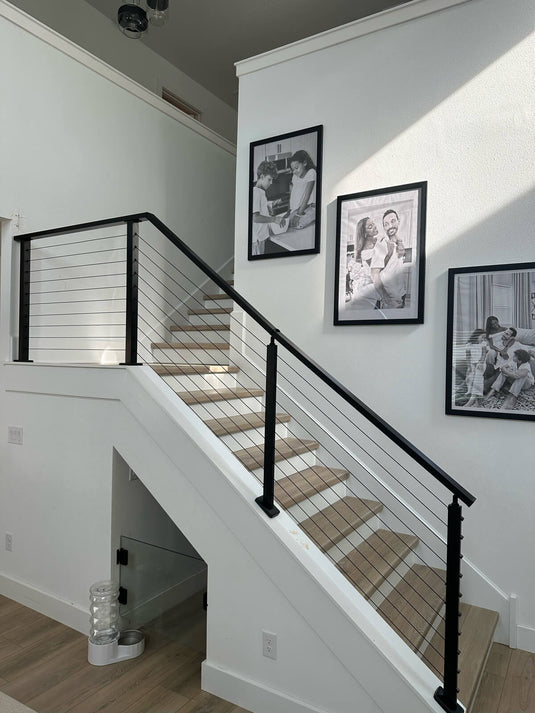TABLE OF CONTENTS
Understanding the True Cost of Cable Railing Systems: What Factors Influence Price?
People love cable railing systems because they seem contemporary and elegant and don't block vistas. They can really make a deck, stairway, or balcony seem better. But when homeowners start to dig into them, the "true cost" may often be a little startling or hard to understand. We've done our fair share of home improvement projects and budgets, so we know that the expense of the cable railing isn't only for the wire itself. A few important things come together to set the ultimate pricing.

Posts and Top Rail Materials Significantly Impact Cable Railing Cost
The posts and top rail are the main parts of your cable railing systems, and the material you choose here is frequently the largest factor in the whole cost.
-
Wood Posts
Pressure-treated pine or cedar is generally the most budget-friendly option for posts. They offer a classic look and can be stained or painted. However, wood requires more ongoing maintenance and may not last as long as metal in harsh climates. The cost here is lower upfront, but consider long-term upkeep.
-
Metal Posts (Aluminum & Stainless Steel)

Aluminum posts are lightweight, corrosion-resistant, and often come pre-drilled for cable, which can save on labor. They are more expensive than wood. Stainless steel posts offer a premium, modern look and excellent durability, especially marine-grade 316 for coastal areas, but they represent the highest material cost for posts.
-
Composite Posts
These can offer a good balance of low maintenance and a clean look, often designed to match composite decking. Their cost typically falls between wood and high-end metal.
Cost per Foot for Cable Railing System
| Product Type | Price per Linear Foot |
| Wood Cable Railing Systems(with tools) | $12-$18 |
| Wood Cable Railing Systems(without tools) | $10-$14 |
| Stainless Steel Systems | $75-$120 |
| Composite post system | $150-$250 |
Click here to get a quick quote>>
Cable and Fitting Selection
While perhaps not the most expensive single component, the type and amount of cable, along with the necessary fittings, definitely add up.
Cable Material and Thickness
Most cable railing systems employ stainless steel cable that is 1/8 inch or 3/16 inch in diameter. Grade 316 stainless is better for outdoor use, particularly near seawater, since it is less likely to rust than Grade 304. Of course, thicker cables and 316 stainless steel cables will cost more per linear foot for cable railing. The overall length of cable you require is a big component, and it depends on the size of your project and how many cable lines you have (usually 3 inches apart).
Fittings
Each cable run requires fittings at both ends to attach and tension the cable. There's a wide array of fitting types, and their complexity and material affect the price:
-
Swage Fittings
These require a special crimping or swaging tool to permanently attach them to the cable. They can be very secure and offer a clean look.
-
Swageless Fittings
These are often DIY-friendly as they typically use a mechanical mechanism (like a set screw or a wedge) to grip the cable without special tools. They can be slightly bulkier and sometimes more expensive per fitting, but might save on tool rental/purchase.
See how to use stemball swage fittings:
-
Tensioning Hardware
Turnbuckles, threaded terminals, or other tensioning mechanisms are essential. More robust or easier-to-adjust tensioners will generally cost more.
The number of corners in your railing design significantly increases the number of end posts and, therefore, the number of fittings required, directly impacting the overall cable railing cost.
The DIY vs. Professional Installation Cost Factor
If you know how to use tools and are comfortable with exact measuring, drilling, and maybe even swaging, you can save a lot of money on labor. But don't forget to include in the cost of any specific equipment you would need to purchase or rent, such as a decent cable cutter and a swaging tool if you need one. If you cut cables too short or break poles, you might potentially lose a lot of money.
Hiring a contractor will add a lot to the cost of labor, which may be anywhere from $50 to $150+ per hour or per linear foot. Professionals have the skills and knowledge to execute the task quickly and accurately, making sure it satisfies all codes. If your project is particularly big, has a lot of complicated ideas, or you just don't have the time or skills, this is usually the best way to go. Even if it costs more up front. If you go this way, get more than one quotation.
Design Complexity and Project Size Influence on Cable Railing Systems
A simple, straight run of railing will be less expensive than a design with multiple corners, angles, or stair sections.
Corners
Each corner typically requires a double-post setup or specialized corner hardware, increasing material and fitting costs.
Stairs

Cable railings on stairs require angled drilling for the cables and often specialized angled washers or fittings, adding to the complexity and cable railing cost.
Overall Length and Height: Larger projects simply require more materials (posts, top rail, cable, fittings), directly scaling the cost. The height of the railing also dictates the number of cable runs needed.
Don't Forget These Additional Cost Factors
Beyond the main components, a few other things can influence your final cable railing cost:
1. Tools
As mentioned, if DIYing, you might need to buy or rent specialized cutters, swaging tools, or drilling jigs.
2. Permits
Depending on your location and the scope of the project, you may need to obtain building permits, which have associated fees.
3. Shipping & Delivery
Especially for bulky items like posts or long lengths of top rail, shipping can add a noticeable amount to the cable railing systems' price.
4. Protective Sleeves/Grommets
Small plastic or stainless steel sleeves are often used where cables pass through intermediate posts to prevent chaffing on wood posts or electrolysis with metal posts. These are small per-item costs but add up.
5. Lighting or Other Accessories
Integrated railing lighting or other decorative elements will increase the overall project cost.

The true cable railing cost is a sum of many parts. While cable railing systems can sometimes be more expensive upfront than traditional wood spindle railings, their durability, low maintenance (especially with metal posts and high-grade stainless cable), and unparalleled aesthetic appeal often provide excellent long-term value. By carefully considering your material choices, design, and whether to DIY or hire a pro, you can better estimate and manage the budget for your beautiful new railing




